
The magical fruit from thin air
[caption id="TenburyWellsMistletoeFestival_Feature" align="aligncenter" width="1024"]
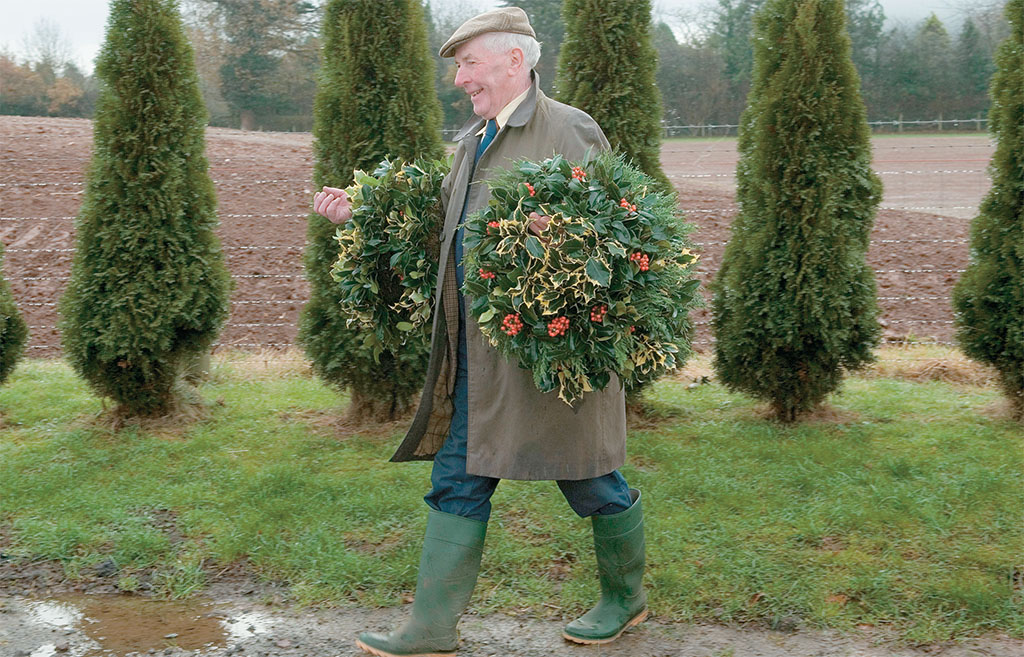
©TRAVELSTOCK COLLECTION-HOMER SYKES/ALAMY
[caption id="TenburyWellsMistletoeFestival_img1" align="aligncenter" width="1008"]
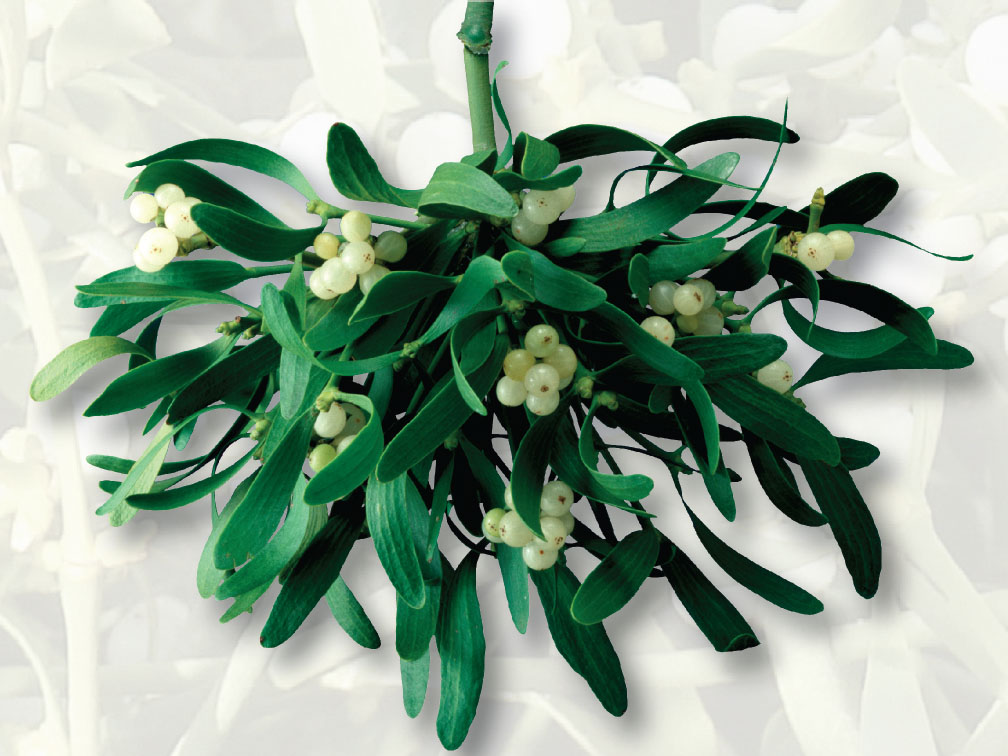
©ANDREW FOX/ALAMY
It had been raining overnight, and the people at Nick Champion’s auction market at Little Hereford in Worcestershire were jacketed against the November wind, and Wellington-booted against the wet. They were surveying long rows of mistletoe lying on the ground, pointing out the bunches that gleamed with the biggest loads of pearly berries. An Irishman explained why. “’Tis the only place to buy mistletoe. There’s none in Ireland, so we came over on the ferry last night to get it here.”
Get it he did. A couple of hours later, he was loading six 30-pound bundles onto a red pickup and departing for Wales and the ferry back home. Other vehicles filled with mistletoe were being driven off to florists and garden centers in every region of Britain. Their owners know that while theoretically mistletoe grows in all parts of the country, the only serious supply is the western counties of Shropshire, Worcestershire, Herefordshire and Gloucestershire. These counties have large apple orchards, and mistletoe, which is a parasite, likes nothing better than to make its home on an apple tree—though it can be happy on poplars and willows too.
Traditionally, farmers harvested the mistletoe and sold it at auctions in market towns throughout the area. Tenbury Wells on the Shropshire-Worcestershire border had the last remaining mistletoe auction, but when the cattle market where it was held was condemned a few years ago, the auction jumped four miles to Nick Champion’s facility. He holds three auctions in late November and early December. He also sells handsome branches of holly and wreaths of Christmas greenery, but the mistletoe is the star of the show.
As sellers were bringing in mistletoe on the day before the first auction, Nick Champion explained that almost all of it nowadays is picked by Roma people. “They work the apple harvest so they spot where it’s growing and then come back later to gather it.” Each bunch is placed on a sheet of plastic and tied with plastic string. “We don’t weigh the bundles but they are all 25 to 30 pounds, and what we sell at our three auctions pretty much supplies the whole of the UK. There’s a bit imported from the Continent, but it’s not so good because it’s too dry. Mistletoe likes the cool and damp.” Asked about whether the 2009 harvest was good or bad, he says, “All years seem to have been good lately, though this year the berries are not very bright. You need a good frost in October to whiten them. When the autumn is warm, some berries will even stay green.”
[caption id="TenburyWellsMistletoeFestival_img2" align="aligncenter" width="1024"]
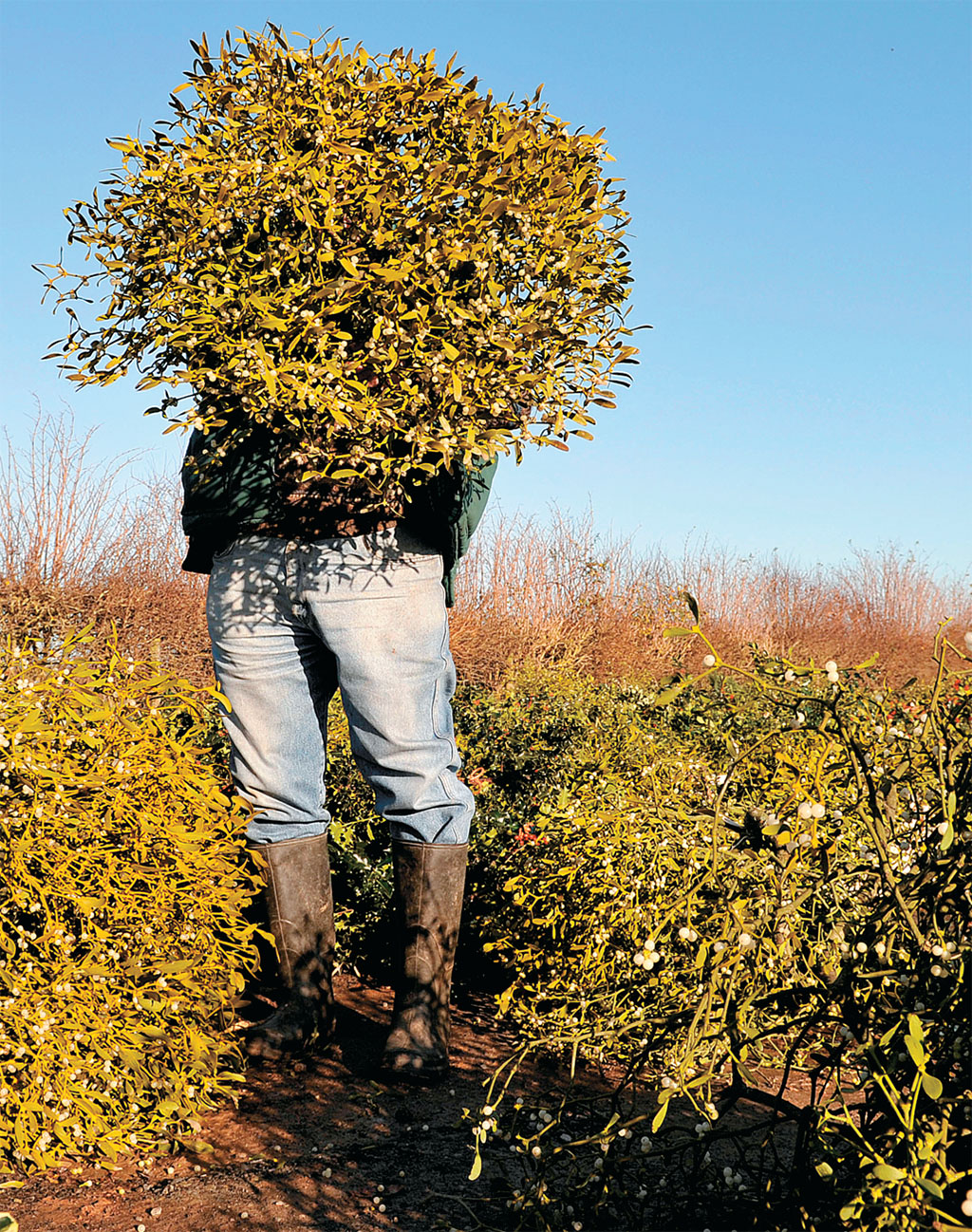
© ACE STOCK LIMITED/ALAMY
[caption id="TenburyWellsMistletoeFestival_img3" align="aligncenter" width="827"]
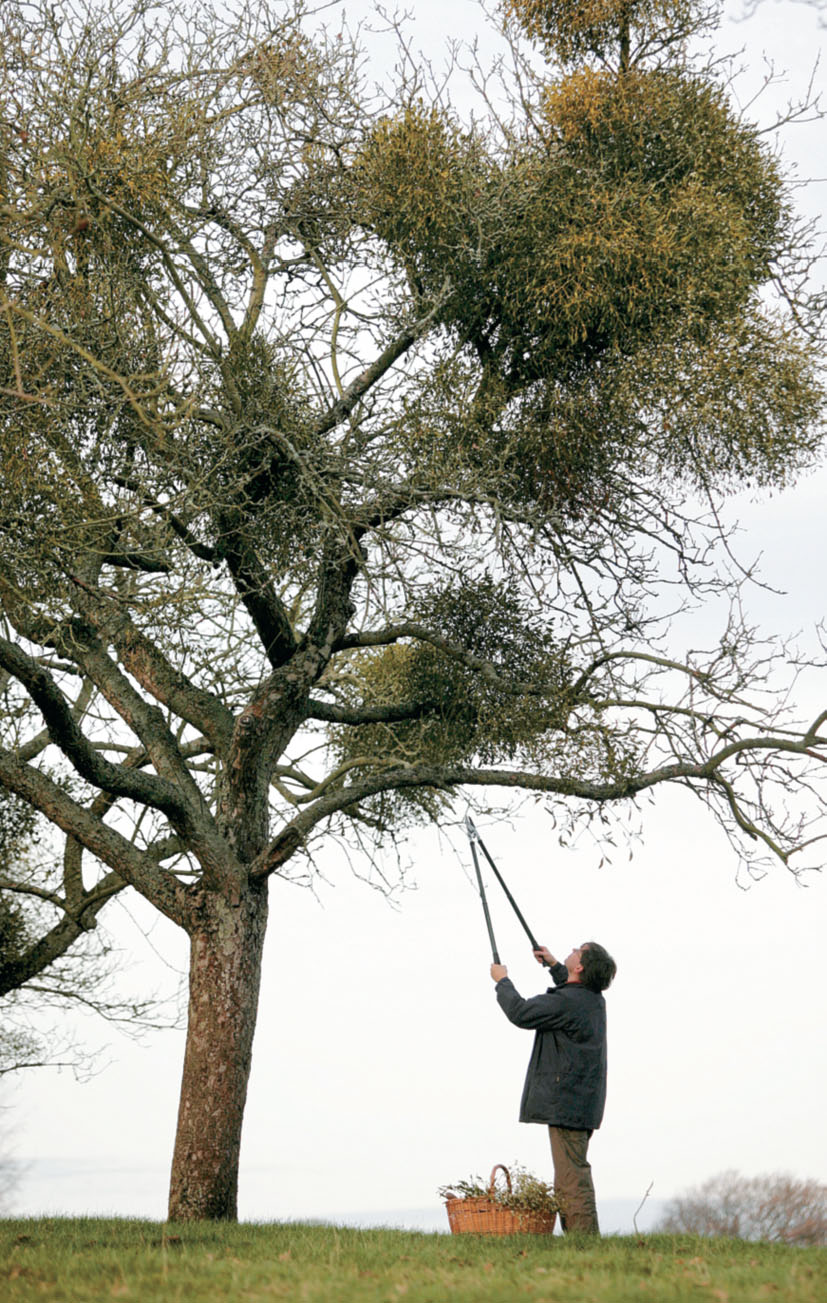
©SIMON HADLEY/ALAMY
[caption id="TenburyWellsMistletoeFestival_img4" align="aligncenter" width="1024"]

© ROBERT CONVERY/ALAMY
[caption id="TenburyWellsMistletoeFestival_img5" align="aligncenter" width="468"]
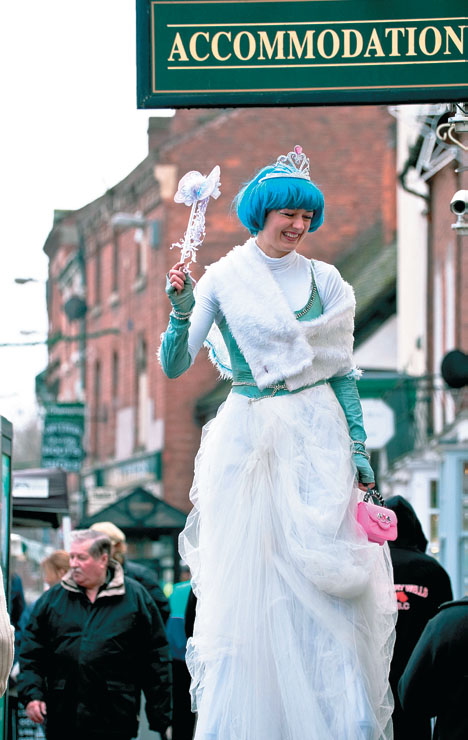
© ROBERT CONVERY/ALAMY
Berries only appear on female plants. They attract birds, notably the mistle thrush, who feed on them, getting the sticky juice and the seeds onto their feet and then transferring them to start new mistletoe bunches while hopping from tree to tree. As the Irishman explained, “Where you see a mistle thrush you know you’re going to be all right for mistletoe.”
The berries are at the heart of mistletoe traditions. Like holly and ivy berries, they appear at the darkest time of year. To our ancestors, imperiled by cold and hunger during the dead of winter, anything that fruited when other plants were sere was a heartening promise of the continuation of life. Such plants were especially cherished at Christmas because their pledge of life mirrored the Nativity’s promise of life everlasting. Mistletoe was special because it not only had fruit, but mysteriously managed to produce it without being rooted in the earth. It seemed to flourish on air alone—in other words, it seemed magical.
This aura of mystery and magic has long wafted around mistletoe. Two thousand years ago, Pliny the Elder wrote that the Druids of Roman Gaul and Britain believed “that mistletoe given in drink will impart fertility to any animal that is barren and that it is an antidote to all poisons.” For this reason, he wrote, Druids “hold nothing more sacred than the mistletoe and a tree on which it is growing, provided it is a Valonia oak.” Pliny went on to describe a Druid priest climbing a tree with a golden sickle to harvest mistletoe, and the ritual sacrifice of two white bulls that followed. Some modern experts question this uncorroborated account, noting that mistletoe rarely grows on oaks. However, Pliny himself pointed that “mistletoe is rare” when he explained why the Druids held it sacred, so his description may well be true.
Certainly, Norse mythology also associates mistletoe with fertility. Legend says that Frigga made every plant and animal promise not to harm her handsome son, Baldr, the god of vegetation. But she overlooked the mistletoe. Taking advantage of this, the capricious sprite Loki made a mistletoe spear and tricked the blind Höðr into killing Baldr with it, thus bringing winter into the world. Luckily, the gods restored Baldr to life, and in celebration Frigga declared that two people passing under mistletoe should kiss to celebrate Baldr’s resurrection.
Making for Mistletoe
MISTLETOE MATTERS, based in Stonehouse, Gloucestershire, UK, is an informative and attractive mistletoe website run by botanist Jonathan Briggs, who also offers mistletoe walks and talks. It can be reached at www.mistletoes-r-us.co.uk or by e-mail: [email protected] or by phone at 07789 684585/01453 791135.
TENBURY WELLS MISTLETOE FESTIVAL The Tenbury Wells Mistletoe Festival takes place on the first weekend of December. Other mistletoe celebrations also occur throughout the harvest season. For details of festival events check http://www.tenburymistletoe-festival.co.uk.
TENBURY WELLS is located on the A456. For more information about the town check the website www.tenburywells.info or e-mail: [email protected]
MISTLETOE AUCTIONS For specific information contact the auctioneer, Nick Champion. Mistletoe Auctions at The Beech, Haynall Lane, Little Hereford, Nr Ludlow, SY8 4BG. Tel: 01584 810 555 or e-mail at [email protected].
[caption id="TenburyWellsMistletoeFestival_img6" align="aligncenter" width="927"]
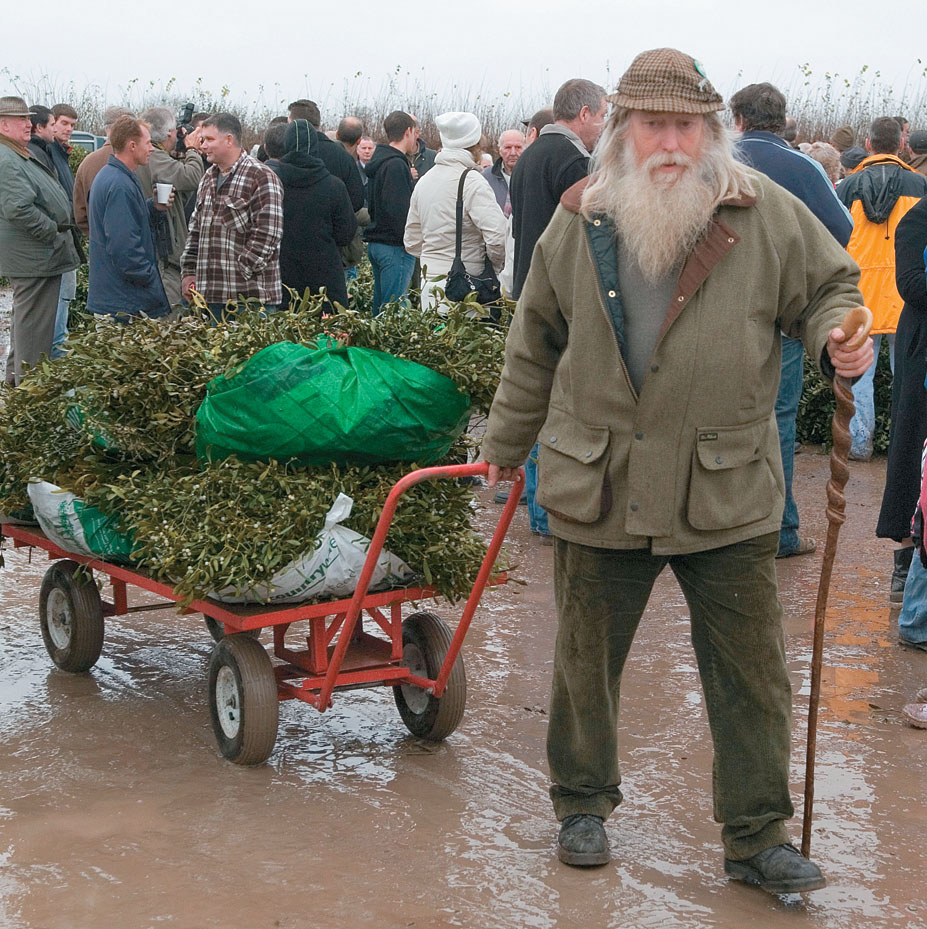
©COUNTRYSIDE COLLECTION—HOMER SYKES/ALAMY
They Guard the Berries
MISTLE THRUSH An 18th-century naturalist wrote “It is thought that the mistletoe would be lost out of nature if it were not continually propagated from tree to tree by the thrush.” Look for them throughout Britain, where they can be found all year. They are about 10 inches long, medium brown, with a handsome pale brown-speckled breast. They will defend a berry-bearing tree against other thrushes in winter. And in Frances Hodgson Burnett’s novel, The Secret Garden, Dickon assures Mary that he won’t tell her secrets when he says, “If tha’ was a missel thrush an showed me where tha’ nest was, does tha’ think I’d tell anyone?”
[caption id="TenburyWellsMistletoeFestival_img7" align="alignright" width="531"]
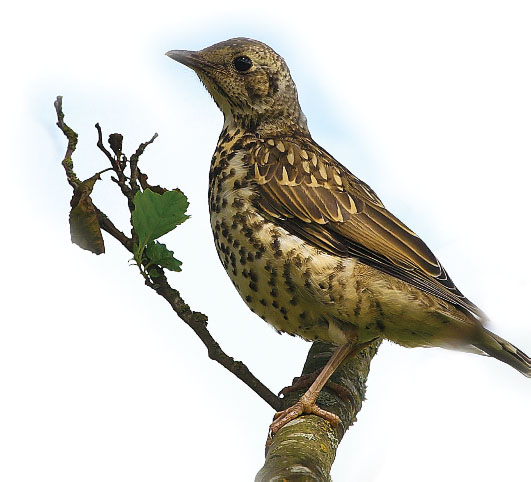
‘MISTLETOE MYSTERIOUSLY MANAGED TO PRODUCE FRUIT WITHOUT BEING ROOTED IN THE EARTH’
Few people in Britain would now cite this Scandinavian tale to explain the English custom of kissing under the mistletoe, though Vikings brought many Norse customs to Britain, and the connection is clear. The church seems to have known of the links to a pagan religion, because traditionally mistletoe is not included among the greenery that decorates churches at Christmas. Notably, when Washington Irving described the custom in 1821 he associated it with the home, not the church. “The mistletoe is still hung up in farmhouses and kitchens; and the young men have the privilege of kissing the girls under it, plucking each time a berry from the bush. When the berries are all plucked the privilege ceases.” Nowadays, kissing under the mistletoe is only found in Britain and countries where British people have settled.
A more widespread tradition is that mistletoe has medicinal properties. In 1721 Sir John Colbatch thought that mistletoe was such an “uncommon beautiful plant” that it must be designed by the Almighty “for further and more noble uses than barely to feed thrushes or to be hung up superstitiously.” He experimented with mistletoe as an epilepsy treatment, perhaps following the traditional belief recorded in the 16th century that “Mistletoe laid on the head draweth out corrupt humours.” Today, herbal medicine uses it to reduce blood pressure, and in Germany, to treat circulatory problems. In Croatia, mistletoe is made into a liqueur called Biskva. Mistletoe extracts are also used in some shampoos.
These uses of mistletoe may seem odd because the plant is toxic: “baleful mistletoe” Shakespeare called it in Titus Andronicus. One explanation is that American mistletoe Phoradendron serotinum is very poisonous, while the mistletoe of Britain and Europe, Viscum album, is much less so, and its toxins are concentrated in its berries, rather than the leaves and twigs, which are the parts used in herbal preparations. Certainly, when mistletoe season comes round the people of Tenbury Wells don’t think it baleful in the least. They campaigned energetically to keep their mistletoe auction and petitioned Parliament to make December 1st National Mistletoe Day, which it did in 2005. They celebrate the harvest with a Mistletoe Festival, which culminates in a Mistletoe Ball with a Mistletoe Queen dressed in white and green and a Holly Prince in red. And, of course, everyone wears a mistletoe boutonnière.





Comments